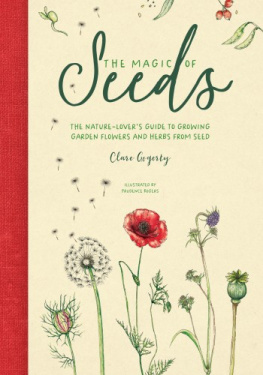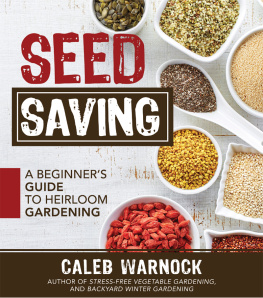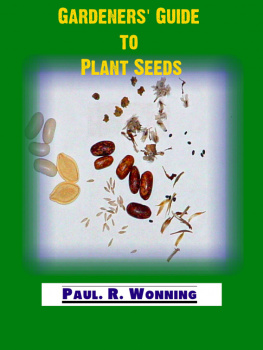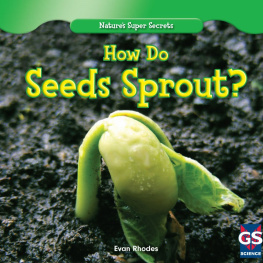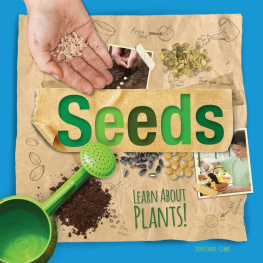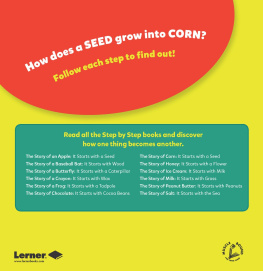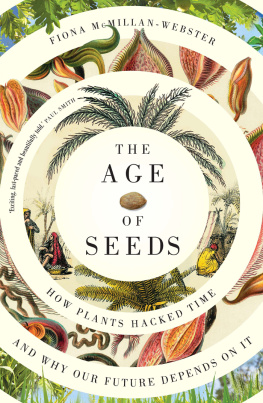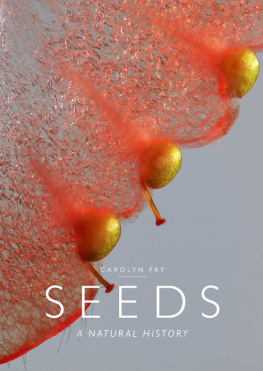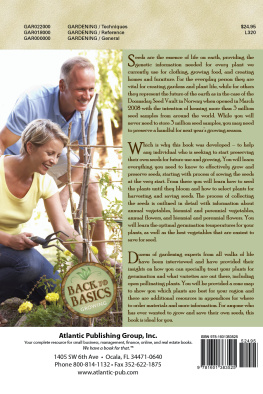Mention of specific companies, organizations, or authorities in this book does not imply endorsement by the author or publisher, nor does mention of specific companies, organizations, or authorities imply that they endorse this book, its author, or the publisher.
Internet addresses and telephone numbers given in this book were accurate at the time it went to press.
2014 by Scott Chaskey
All rights reserved. No part of this publication may be reproduced or transmitted in any form or by any means, electronic or mechanical, including photocopying, recording, or any other information storage and retrieval system, without the written permission of the publisher.
Permissons for excerpts used in the book can be found on .
Illustrations by Liam Chaskey
Book design by Kara Plikaitis
Library of Congress Cataloging-in-Publication Data is on file with the publisher.
ISBN 9781609615031 hardcover
eISBN-13: 9781609615048

We inspire and enable people to improve their lives and the world around them.
rodalebooks.com
FOR JOSH LEVINE

Who has been with me throughout this journey into seedtime
The wood waits, as if its most precious sap were stillness.
John Fowles, The Tree
AND FOR MY CHILDREN:
Levin, Rowenna, and Liam
AND JOSHS CHILDREN:
Willa and Ezra, the next generation
Fair seedtime had my soul...
from The Prelude, by William Wordsworth
CONTENTS
ILLUSTRATIONS BY LIAM CHASKEY

PROLOGUE

Variations on a Theme
First Variation
A community that has chosen to share in fieldwork and the ritual of harvesting is entitled also to share some honest discourse. A friend, after reading one of my letters to members of our community farm, wrote me a sprightly, scolding note: Why are you wasting your time out in those fields? You are meant to be a man of letters!
I quite like that phrase, a man of lettersits a little archaic, perhaps, but suggestive of a true vocation. Without intending to, at least consciously, I seem to have forged an identity that takes equal sustenance from the soil and from literatureplants and words spring into being like the musical notes of a red-winged blackbird returning to voice the spirit of March. My impulse to write, and to care for plants, is born out of the same impulse in the blackbirds throatto bring the thing into being, whether it be a call or response, a comment, a question, or a celebration. I am not alone in my homelandthe intersection of language and landscape has long been a source of inspiration in American letters.
On the land and in my study, I treasure my daily encounters with both seeds and words. I originally conceived of this book as one mans experience of the practice of two disciplines, though as I began the journey, I came to realize that such an approach could miss the urgency of the story. This story is rapidly evolving and the stakes, for those concerned about biodiversity and ecological integrity, are high. I approach the story of seeds not from a library or a laboratory but with my feet accustomed to contact with the soil. As a writer, I am influenced by the words of an Aztec poet: My heart is sprouting flowers in the middle of the night.... As a farmer, my labor is inspired by the action of a plant coming to flower and producing seed for the next generation.
This book, while drawing on scholarship and research, is primarily intended to be a discovery, though I didnt foresee that our alienation from the natural world would play so central a role. In The Bow and the Lyre, the Mexican writer Octavio Paz observes: The poet does not choose his words... when a poet finds his word he recognizes it: it was already in him. Seeds, like words, are encoded with a hidden genetic landscape that is individual to the species, and encyclopedic.
If we look at the world of plants as a topographical map, seeds are everywhereat the foundation of mountains, at the source of rivers, and scattered over sandbanks and fields. Poetry can be found there, tooit appears within the cold water of a mountain stream, on the surface of a tidal pool, or on the face of a bank of soil dotted with the nests of swallows. As I experience almost daily, to enter the realm of seeds is to witness a kind of magical reality, one that germinates out of the soil. Much of the institutional framework that we have created to steward that soilfrom the original promise of the land grant universities to the industrial agricultural system itselfthreatens to sacrifice not only that magical reality but also the source of our daily bread.
In the words of Cary Fowler, head of the Global Crop Diversity Trust: We are in the midst of a mass extinction event in agriculture, at precisely a moment in history when diversity for further adaptation is most needed. As we face the challenges of climate change and the loss of prime agricultural soils, we need a diverse seed supply to counter the unpredictable and the unknown. Instead, we continue to lose plant speciesand the seeds of the futureat an alarming rate.
We can all begin to access this story through the language of the spring wind and summer rains, through the life force in a handful of silt loam, and through the tireless and careful work of some extraordinary individuals, true keepers of the earth. We should also gain some familiarity with the language and laws recorded by our universities, courts, and corporate players that either encourage or inhibit ecological actions. Octavio Paz comments that words behave like capricious and autonomous beings. In my experience, his lyrical observation also applies to seeds.
Second Variation
For years, I have compiled notes on the mystery and magic of seeds, and my notebooks are filled not only with quotations from other writers but also with practical observations intended to enhance my abilities as a sower. That wordsowermay for some suggest the painter Jean-Franois Millets pastoral image of a contented laborer, cloth bag draped over a shoulder, scattering seeds of grain across a tilled field. We can identify the time and place that the painter portraysmid-19th-century Francebut the image of the laborer traversing the field is timeless. As a species, we have been collecting, saving, and sowing seeds for thousands of years; the stories, the art, and the data depicting our relationship with seeds are abundant, and, like seeds, scattered around the globe. And yet, it is probable that the routine task performed in Millets painting is unrecognizable to many 21st-century citizens.
Though our lives still depend upon the viability of the crops we choose to preserve and disseminate, knowledge of seeds has become increasingly specialized among a handful of agrarians, scientists, and activists. In an age obsessed with industrial efficiency, it is prudent to acknowledge the danger, along with the gifts, that accompanies technological advance. The poet William Blake, writing near the dawn of the Industrial Revolution, wrote this simple, instructive proverb: In seedtime learn, in harvest teach, in winter enjoy. The quiet wisdom of Blakes words (somewhat muffled in the year 2013) is validated by 10,000 years of humans practicing agriculture.


